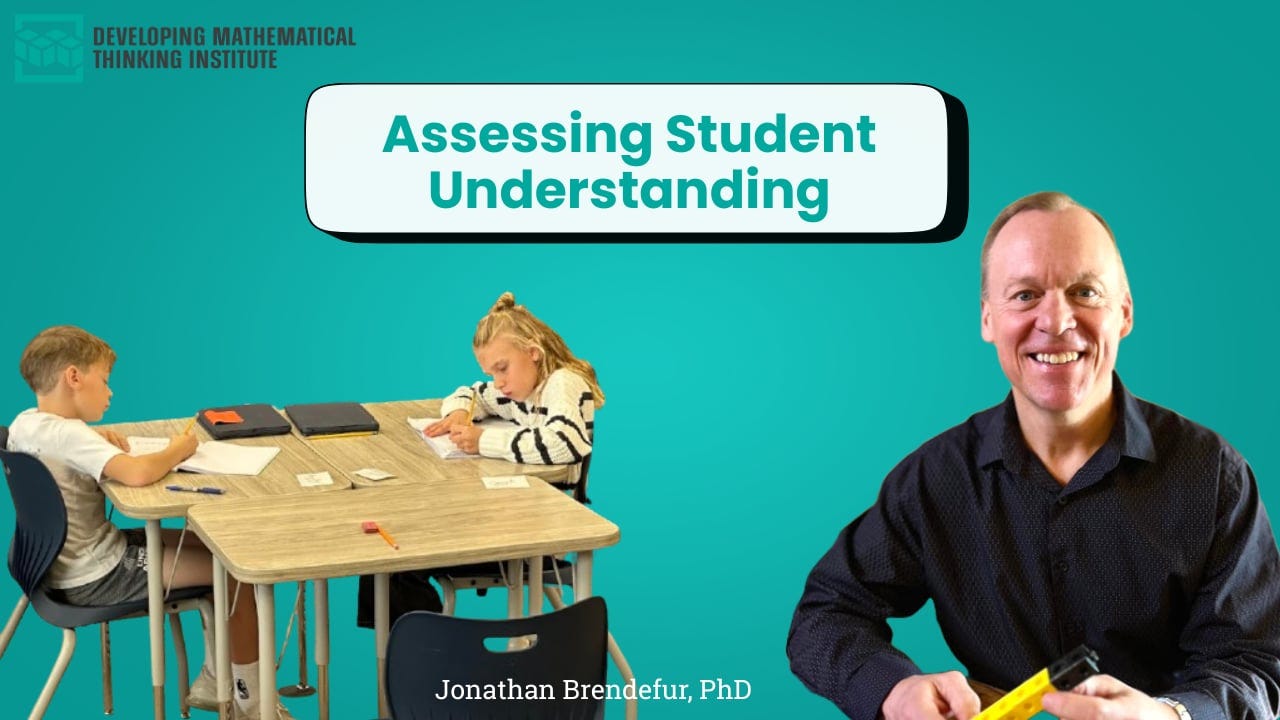Assessing Student Understanding: A Framework For Testing and Teaching
This resear.verview presents the DMT assessment framework, which guides educators in assessing student understanding in math through a multi-level approach encompassing skill-based and problem-solving
Introduction:
The article "Assessing Student Understanding: A Framework for Testing and Teaching" by Brendefur et al. (2016) explores a structured framework for assessing student understanding in mathematics. It emphasizes the importance of formative and summative assessments to guide instructional decisions and evaluate student learning comprehensively. The framework integrates various levels of reasoning to help educators discern students’ depth of understanding, identify misconceptions, and adjust teaching strategies accordingly.
The DMT Assessment Framework
The Developing Mathematical Thinking (DMT) assessment framework is central to the article. It builds on established models such as Webb’s DOK (Depth of Knowledge) framework and de Lange’s PISA (Programme for International Student Assessment) framework. The DMT framework categorizes assessment tasks into three levels:
Level 1: Skill, Rote, and Procedural Tasks
These tasks require students to recall information or perform simple procedures, such as solving basic arithmetic problems or defining mathematical terms. While foundational, these tasks can vary in difficulty depending on students’ familiarity with the concepts.
Level 2: Problem Solving and Conceptual Tasks
This level involves tasks requiring students to apply mathematical concepts to real-world or abstract problems. Students must demonstrate reasoning by choosing appropriate solution paths and using visual models like number lines or arrays.
Level 3: Reasoning and Justification Tasks
These tasks challenge students to justify their solutions or critique others’ reasoning using mathematical properties and models. They involve higher-order thinking, linking concepts to generalizations akin to mathematical proofs.
Practical Applications in Classrooms
The article provides vignettes from first- and fourth-grade classrooms to illustrate how the framework enhances teaching practices:
First Grade Example: Kelli Rich used the framework during a unit on place value, asking students to model numbers in multiple ways using base-ten pieces. This approach encouraged deeper conceptual understanding by prompting students to explore alternative representations.
Fourth Grade Example: Sarah Appleton guided students through a Level 3 task involving equivalent fractions. Students used visual models like number lines and area diagrams to analyze equivalency, fostering a nuanced understanding of fraction representation..
Benefits of the DMTI Assessment Framework
The DMT assessment framework offers several significant advantages for educators seeking to enhance student learning and improve instructional practices. One key benefit is its ability to help teachers identify misconceptions. By analyzing student responses to Level 3 reasoning tasks, educators can uncover gaps in understanding and pinpoint incorrect solution strategies, providing valuable insight into where students struggle. Additionally, Level 2 problem solving tasks offer opportunities for instructional adjustments. These tasks enable teachers to refine lesson plans and address conceptual misunderstandings, ensuring that students grasp the underlying principles of mathematical concepts. Finally, the framework supports enhanced student learning by leveraging tasks at different levels. Level 1 skill-based tasks establish a strong foundation of procedural knowledge, while Level 3 reasoning tasks challenge students to engage in critical thinking and develop deeper comprehension of complex ideas. These levels create a comprehensive approach to assessing and fostering mathematical growth.
Implications for Professional Development
Professional development is essential for effectively implementing the DMT assessment matrix. Sessions focus on designing multi-level assessment tasks, crafting questions that prompt deeper thinking, and interpreting student responses across all levels of the matrix. Research cited in the article demonstrates that integrating this approach improves student achievement on standardized tests while fostering critical thinking skills.
Conclusion
Brendefur and Strother’s work highlights the importance of assessing student understanding through a multi-level DMTI assessment framework that bridges theoretical models with practical classroom applications. By categorizing Assessing Student Understanding | Page 4 tasks into skill-based, problem-solving, conceptual, and reasoning levels, educators gain a powerful tool for evaluating student learning comprehensively and adapting instruction to support diverse learners.
References
Brendefur, J.L., Strother, S., Rich, K., & Appleton, S. (2016). Assessing Student Understanding: A Framework for Testing and Teaching. Teaching Children Mathematics, 23(3), 174-181.
de Lange, J. (1999). Framework for Classroom Assessment in Mathematics. Utrecht: Freudenthal Institute; Madison: WCER/NCISLA.
Hiebert, J. (1986). Conceptual and Procedural Knowledge: The Case of Mathematics. Mahwah, NJ: Lawrence Erlbaum Associates.
National Council of Teachers of Mathematics (NCTM). (2014). Principles to Actions: Ensuring Mathematical Success for All. Reston, VA: NCTM.
Stein, M.K., & Smith, M.S. (1998). Mathematical Tasks as a Framework for Reflection: From Research to Practice. Mathematics Teaching in the Middle School, 3(October), 268–275.
Webb, N.L. (2002). Language Arts Levels of Depth of Knowledge. Unpublished paper.
Social Media
How do teachers assess student learning beyond right and wrong answers? The article "Assessing Student Understanding: A Framework for Testing and Teaching" by Brendefur et al. (2016) introduces the DMT assessment framework—a powerful tool for evaluating and enhancing students’ mathematical thinking. This framework categorizes tasks into three levels: skill-based, problem-solving, and reasoning/justification. Educators can use this structure to uncover misconceptions, guide students toward deeper understanding, and adapt teaching strategies. Whether it is first graders exploring place value or fourth graders analyzing equivalent fractions, this approach ensures that every student’s learning journey is supported at their level of comprehension.
Why does this matter? Research shows that integrating multi-level assessments improves student achievement on standardized tests and fosters critical thinking skills. Through professional development and classroom application, educators are empowered to design tasks that challenge students to reason, justify, and connect concepts. Want to see the framework in action? Check out dmtinstitute.com.
Dive deeper into this research and discover how it shapes the future of math education!


